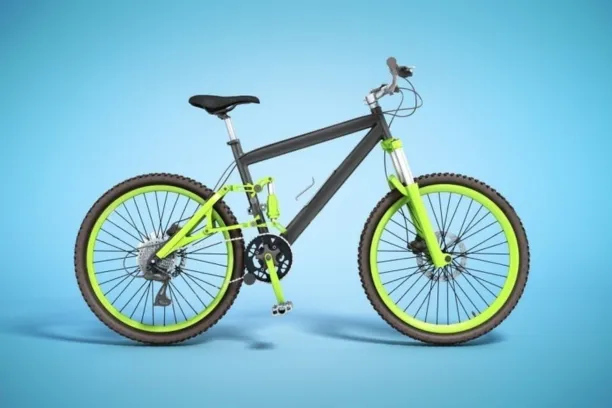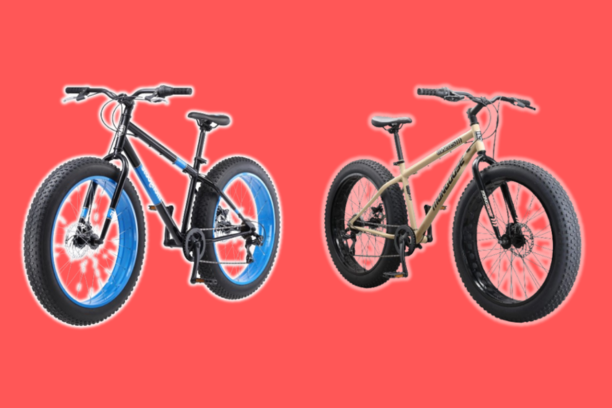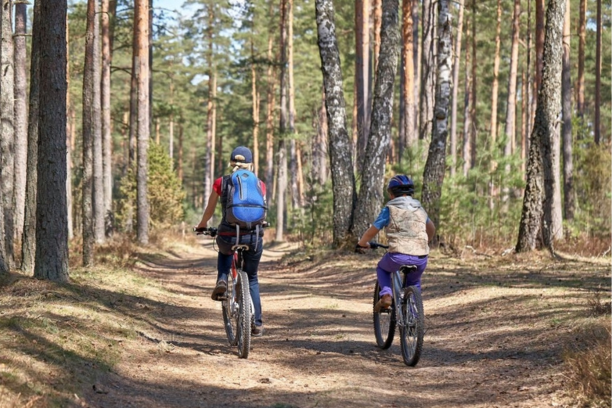What Is a 29er Bike?
A 29er bike is not your average two-wheeler! Picture this: larger wheels, more stability, and an adrenaline-filled ride. These bad boys are taking the mountain biking world by storm. But what exactly makes them unique?
Let’s dive into the world of 29ers and uncover why they’re all the rage among riders craving an exhilarating off-road experience.
Understanding 29er Bikes
So, you’ve heard the buzz about 29er bikes and their incredible performance. But what exactly sets them apart from the rest? Let’s dig deeper into this fascinating world of two-wheeled wonders.
Features
At its core, a 29er bike is defined by its wheel size – a whopping 29 inches! This larger diameter brings distinct advantages to the table.
Paired with a frame geometry designed to accommodate these wheels, they offer exceptional performance on various terrains.
These features have a significant impact on your riding experience:
- Performance: The larger wheels of a 29er bike allow for better momentum conservation as you traverse rough terrain or overcome obstacles.
- Stability: With bigger wheels comes improved balance while tackling challenging terrains at higher speeds. The added stability instills confidence in riders.
- Traction: Increased contact patch between the tire and ground enhances grip when cornering or climbing steep inclines on trails.
- Ride Quality: Thanks to their size, larger wheels absorb bumps more effectively than smaller counterparts, resulting in reduced vibrations and an overall smoother ride.
Advantages of 29er Bikes
Let’s break down some key benefits that make the 29ers shine:
- Enhanced Rolling Efficiency: Larger wheels maintain momentum over rugged surfaces effortlessly, making uphill battles feel less daunting.
- Improved Traction: When it comes to gripping the trail, those extra inches provide increased contact with the ground for superior traction during turns and climbs.
- Better Stability: Navigating through tricky terrains becomes easier due to enhanced balance bestowed upon riders by those sizable wheels.
- Smooth Ride Quality: Experience fewer jolts and vibrations as larger wheels efficiently absorb bumps along your journey.
Potential Drawbacks
While there are many advantages, it’s important to consider potential drawbacks too. Maneuverability in tight spaces or agility on technical trails may be slightly compromised due to the larger wheel size of 29ers.
However, keep in mind that personal preference plays a vital role when choosing the right bike based on your individual riding style and terrain preferences.
Types of 29er Bikes

When it comes to 29er bikes, there’s more than meets the eye. They come in various flavors, each tailored to specific riding styles and terrains.
Let’s explore the different types and find out which one suits your adventurous spirit!
Hardtail vs Full Suspension
Hardtail: Picture a bike with front suspension forks but no rear suspension system – that’s a hardtail! These frames offer efficiency and responsiveness, making them ideal for less demanding trails or cross-country rides where pedaling power is key.
Full Suspension: If you crave adrenaline-fueled adventures on aggressive trails or downhill escapades, full-suspension bikes are your ultimate companions.
With both front and rear suspensions working harmoniously, they provide enhanced comfort over rugged terrains by absorbing impacts effectively.
Mountain vs Gravel/Adventure Usage
Mountain-specific 29ers: As their name suggests, these beasts are built for off-road domination. Mountain bikes prioritize robustness and capability in tackling rough terrains like rocky paths or forested trails.
Whether you’re conquering steep climbs or descending with finesse, mountain-specific 29ers have got your back.
Understanding the distinction between mountain-specific and gravel/adventure-oriented 29ers will help you choose the perfect companion based on your preferred style of riding and desired terrain challenges.
Choosing the Right 29er Bike
Now that you’re familiar with the world of 29er bikes, it’s time to find your perfect match. Whether you’re a beginner or an experienced rider seeking specific performance attributes, there are essential considerations for selecting the right 29er bike.
Considerations for Beginners
If you’re new to the world of mountain biking and eager to embark on thrilling adventures with a 29er bike, here are some key factors to keep in mind:
- Budget: Determine how much you’re willing to invest in your new ride. Remember, quality matters.
- Intended Use: Clarify whether you’ll be tackling cross-country trails, downhill descents, or a mix of terrains.
- Terrain: Assess the type of terrain prevalent in your area – rocky paths, forested trails, or smooth dirt tracks.
- Skill Level: Be honest about your riding abilities; choose a bike that matches your current skill level and allows room for growth.
Expert-Level Considerations
For experienced riders looking to elevate their game and squeeze out every ounce of performance from their 29ers, advanced considerations come into play:
- Frame Materials: Delve into the nuances of frame materials like carbon fiber (lightweight and stiff) versus aluminum (durable and affordable).
- Suspension Types: Explore suspension options such as air forks (adjustable and lightweight) versus coil forks (plush feel but slightly heavier).
- Component Choices: Dive deeper into component choices like drivetrains (1x vs. multi-chainring), brakes (hydraulic disc vs. mechanical disc), and wheels/tires tailored to specific riding styles.
By understanding these expert-level considerations when choosing components on your 29er bike build or selecting pre-built models from manufacturers, you can fine-tune every aspect according to your preferences and desired performance attributes.
Frequently Asked Questions
Can I use regular mountain bike components on a 29er bike?
Yes, you can typically use regular mountain bike components on a 29er bike. However, it’s important to ensure compatibility with the larger wheel size and frame geometry of a 29er. Some specific parts like wheels or tires may need to be designed specifically for the 29-inch diameter.
Are there any weight differences between a 29er and other types of bikes?
Generally, due to their larger wheels and frames, 29er bikes tend to weigh slightly more than their smaller-wheel counterparts. However, advancements in materials and technologies have significantly reduced this weight difference over the years. The overall weight will also depend on factors like frame material (carbon fiber vs aluminum) and component choices.
Will my height or body type affect my ability to ride a 29er bike?
No, your height or body type should not limit your ability to ride a 29er bike. These bikes are designed for riders of various sizes and shapes. It’s essential, however, to choose the right frame size that matches your proportions for optimal comfort and control.
Do I need specialized skills or experience to ride a 29er bike?
While riding experience is always beneficial when exploring new terrains, you don’t necessarily need specialized skills to ride a 29er bike as long as you have basic cycling abilities. If you’re new to mountain biking or transitioning from smaller-wheeled bikes, it might take some time to get used to the handling characteristics of larger wheels.
Can I convert my existing mountain bike into a 29er?
Converting an existing non-29er mountain bike into a truly dedicated 29er would require significant modifications beyond just swapping out wheels/tires – such as changing fork travel or adjusting frame geometry – which may not be feasible or cost-effective in most cases. It’s generally recommended to purchase a purpose-built 29er bike for the best performance and compatibility.
Conclusion
A 29er bike is not just your ordinary bicycle. With its larger wheels and unique frame geometry, it offers an exhilarating off-road experience like no other.
The 29-inch wheels provide enhanced stability, traction, and rolling efficiency over rough terrains.
Whether you’re a beginner craving adventure or an experienced rider seeking performance attributes tailored to your needs, the world of 29ers has something for everyone. So hop on a 29er bike and get ready to conquer the trails with confidence!






